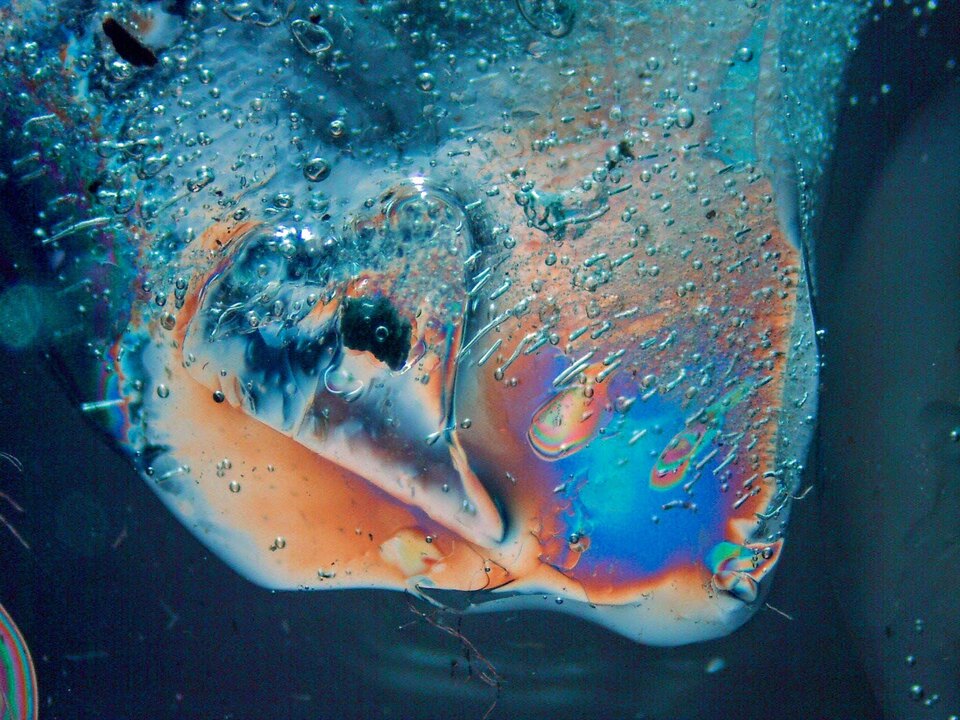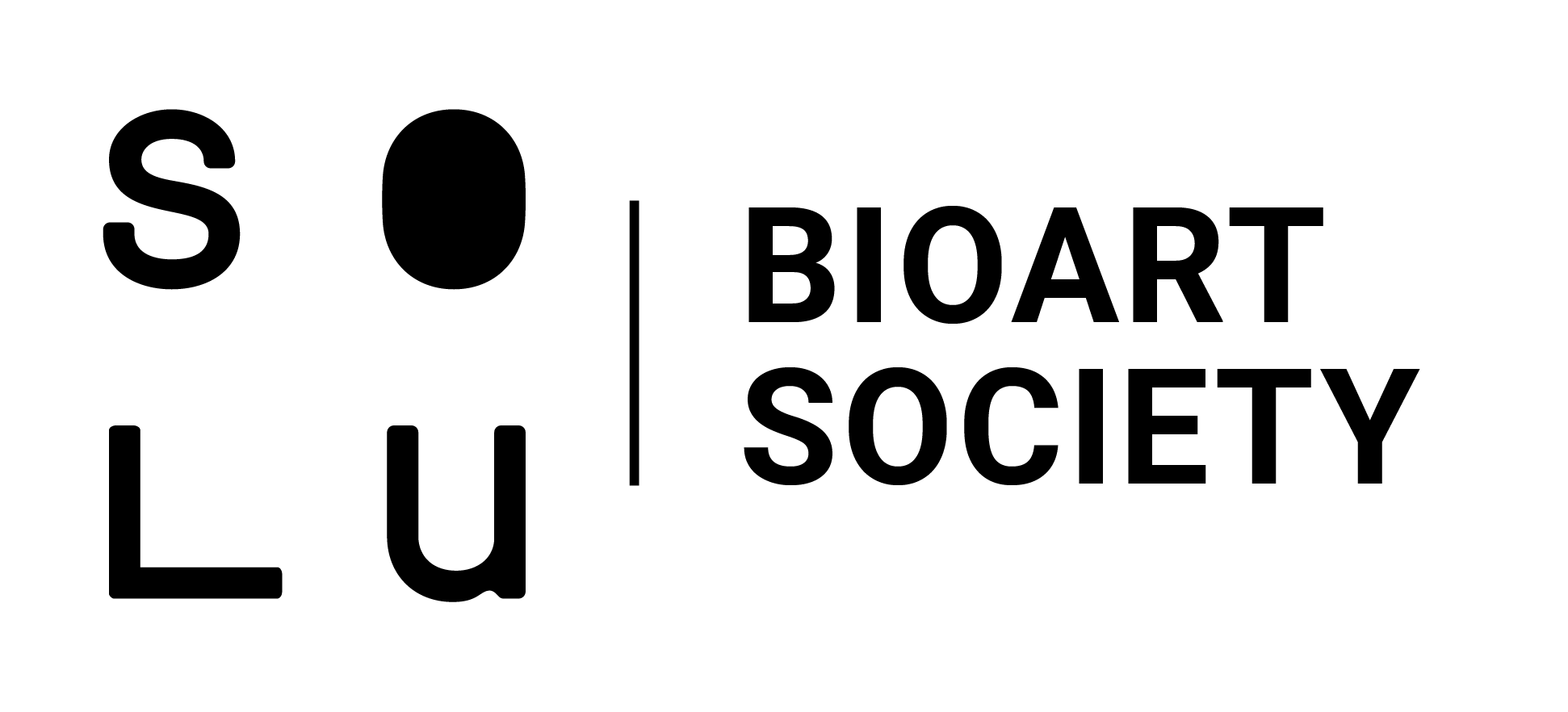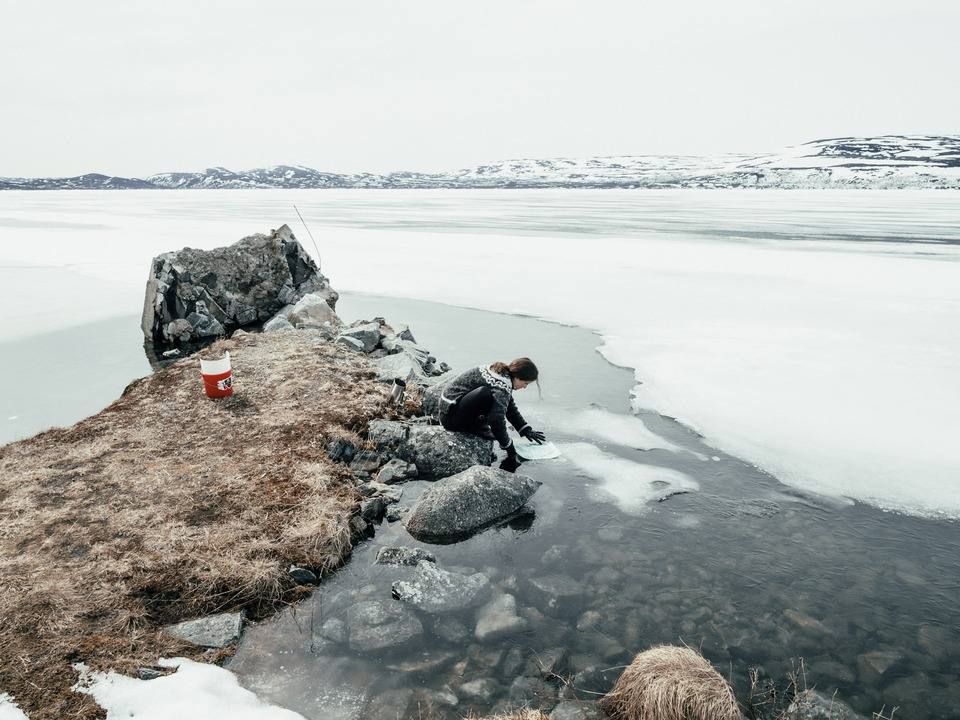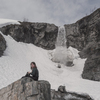Laura Lowe spent a few weeks during the melting season May – June 2025, at the Ars Bioarctica residency conducting artistic research for her forthcoming solo exhibition “Fiat Lux”, at Forum Box, Helsinki (2026). Her work is supported by a two-year grant from the Finnish Cultural Foundation.
From the last coal to the last glaciers
I came to the Kilpisjärvi Biological Station to continue an ongoing body of work titled the “Structural Colour Paintings”. These works investigate the strange iridescence found in oil slicks and coal — colours not derived from pigment, but from the structural interference of light. Similar to a prism, these colours emerge from the refraction and bending of light, producing otherworldly rainbow spectra. I created a method to replicate this optical phenomenon with my paintings, by building up translucent glassy layers of paint and coal collected during the closure of Hanasaari and Salmisaari power stations.
As the residency’s coordinator artist Leena Valkeapää told me, every journey in the North begins with the wind. I travelled 1300 kilometres after discovering that the coal I have been working with in Helsinki, is carried by air currents thousands of kilometres north. These tiny soot particles from power plants all across Northern Europe embed themselves into the snow and ice, altering their reflective capacity or ‘albedo’. This ‘black carbon’ contamination may be a more significant cause of the rapid melting of Arctic ice reserves than the increasing global temperatures. From the changes happening near, I became obsessed with their planetary ripple effects afar.

The artist in front of Steindalsbreen glacier. Photography courtesy of Otto Lowe.
Painting the invisible
I am collecting microscopy samples at the border of three nations — from glaciers, snow-capped fells, cascading waterfalls and meltwater rapids to ice-covered lakes and the strangely warm Arctic Sea. These field visits across Finland, Sweden, and Norway have in themselves been striking visual encounters with a changing landscape.
Perhaps the most vivid, was a hike to Steindalsbreen, one the fastest melting glaciers in the North. It was only a few days after another glacier in the Swiss Alps had collapsed and buried a village beneath ice. The stages of the Steindalsbreen glacier’s retreat are dated with little aluminium plaques, — almost like grave markers “1998”, “2002”, “2006”, and “2010”. The terminus of this eight-thousand-year-old ice giant has now withdrawn well beyond this final sign, huddled in a puddle at the far end of the empty basin. I walked hundreds of metres across where a body of ice once slept undisturbed. As a painter, I was struck to see how a landscape consisting of essentially emptiness or negative pictorial space can reveal something out of nothing, by the very absence it presents us.
In parallel to these sample collecting trips, I am using gelatin to cast prints of the surface texture of the melting ice on Lake Kilpisjärvi to use in a series of smaller works. I want to capture the intense topography hidden in the whiteness, which is only really revealed through the material surface. What you notice in the monochrome of the ice are the deep shadows and brilliant highlights, as light hits the shining glassy surface of an ice sheet, or the indentation patterns in the snow. It is these subtle, near invisible qualities of ice and melting that present a visual challenge for both the artist and the viewer.

Working in the microscopy lab. Photography courtesy of Otto Lowe.
Where light and matter meet
My painting practice is the result of extensive laboratory experimentation, so perhaps it is no surprise that I find myself drawn to alchemy. These proto-scientific enquiries were deeply involved with the birth of pigments, paint, colour theory, and our modern understanding of optics. The first two stages in the alchemical transformation process are nigredo ‘blackness’ and albedo ‘whiteness’. Albedo marks the distillation phase, where material is cleansed of impurities, and divided into two opposing principles. This is the crux of how my paintings form. Structural colour comes into being from the interplay of two polarities — light and matter — it is formed from the intertwining of the immaterial and material. All life is in essence born of the same synthesis: carbon bodies animated by energy from the sun.
During the residency, this conceptual framework found an unexpected mirror in the scientific processes used to study Arctic melt. Both the black carbon particles and the crystalline structure of ice are observed via the structural colour they exhibit under polarised light. I realised that not only was the raw material of my paintings ending up in this landscape, but also the very phenomenon that I reproduce in the studio was being employed in its research.
Painting has always concerned itself with the study of colour, from the earliest play of firelight across Ice Age cave painting, to the chiaroscuro of Renaissance and the colour studies of Impressionism. My work continues this dialogue between painting and science, and their shared love affair with the study of light. Both disciplines ask how the manifestation of colour from the interplay of light and material surface shapes our perception of the world around us and can bring hidden realities into view.

First possible sighting of 'black carbon' particles in ice using polarized microscopy. Image courtesy of the artist.
An alchemical rainbow under the microscope
In the laboratory, I have been using microscopy to look at the visual language of melting ice as a reference point for future paintings. I am interested in observing optical qualities, such as opacity-transparency, absorption-reflectivity, colour spectra and transparent surface textures, as well as how the samples morph under blackfield/whitefield lighting, — and transferring these qualities to the surfaces of my works.
Between the stages of nigredo and albedo is a short-lived phase of the distillation process called the alchemical rainbow or cauda pavonis ‘the peacock’s tail’. Under the microscope, I encounter a similar moment of polychromatic transformation. Initially, the ice appears only as a black surface, suddenly sparking into colour as I rotate the polarising filter. The light reveals a shifting kaleidoscope. Spatial scales collapse, and what you know to be tiny fractals in the ice begin to resemble vast constellations and celestial phenomena — a comet’s tail, a nebula, aurora borealis dancing on the periphery of a petri dish. It feels disorienting to see the microcosmic become the macrocosmic, and the landscape repeat itself in miniature form. I am tempted to quote the old alchemical axiom "As above, so below."
There is something rapturous in seeing the eternal heavens reflected in the precarious moment of the ice melting away. Whilst exploring the visuality of melting/contamination, I have thought much about August Stringberg’s Celestographs: attempts to capture the sky directly onto papers coated with photosensitive chemicals. Although the resulting images are nothing more than the interaction of air pollution with the silver nitrate salts and albumen, I unfailingly still see the starry sky in every image. I hope to translate into the work my intense feelings of double vision and conflicting emotions, simultaneous wonder and horror in seeing the impact of microscopic particles on the macroscopic vastness of the landscape.
I would like to thank the Finnish Cultural Foundation, the University of Helsinki, the Bioart Society team, and the staff at Kilpisjärvi Biological Station for their kindness and generous support of my work; and to photographer Otto Lowe for his amazing documentation and support throughout process.
LAURA LOWE (b.1991 Vantaa) trained at Factum Arte & Factum Foundation, Madrid, before completing her Masters at the Academy of Fine Arts Helsinki ‘23. Her work has been exhibited at Galleria Paperihuone, Hämeenlinna ‘22; Galleria Rajatila, Tampere ‘23; B-galleria, Turku ‘24, and Huuto galleria, Helsinki ‘25. Lowe has recently been awarded the Anita Snellman Stipend and completed her first public commission, after winning the Hotel GLO Art competition. Her work can be viewed on the artist's website and instagram page.





















